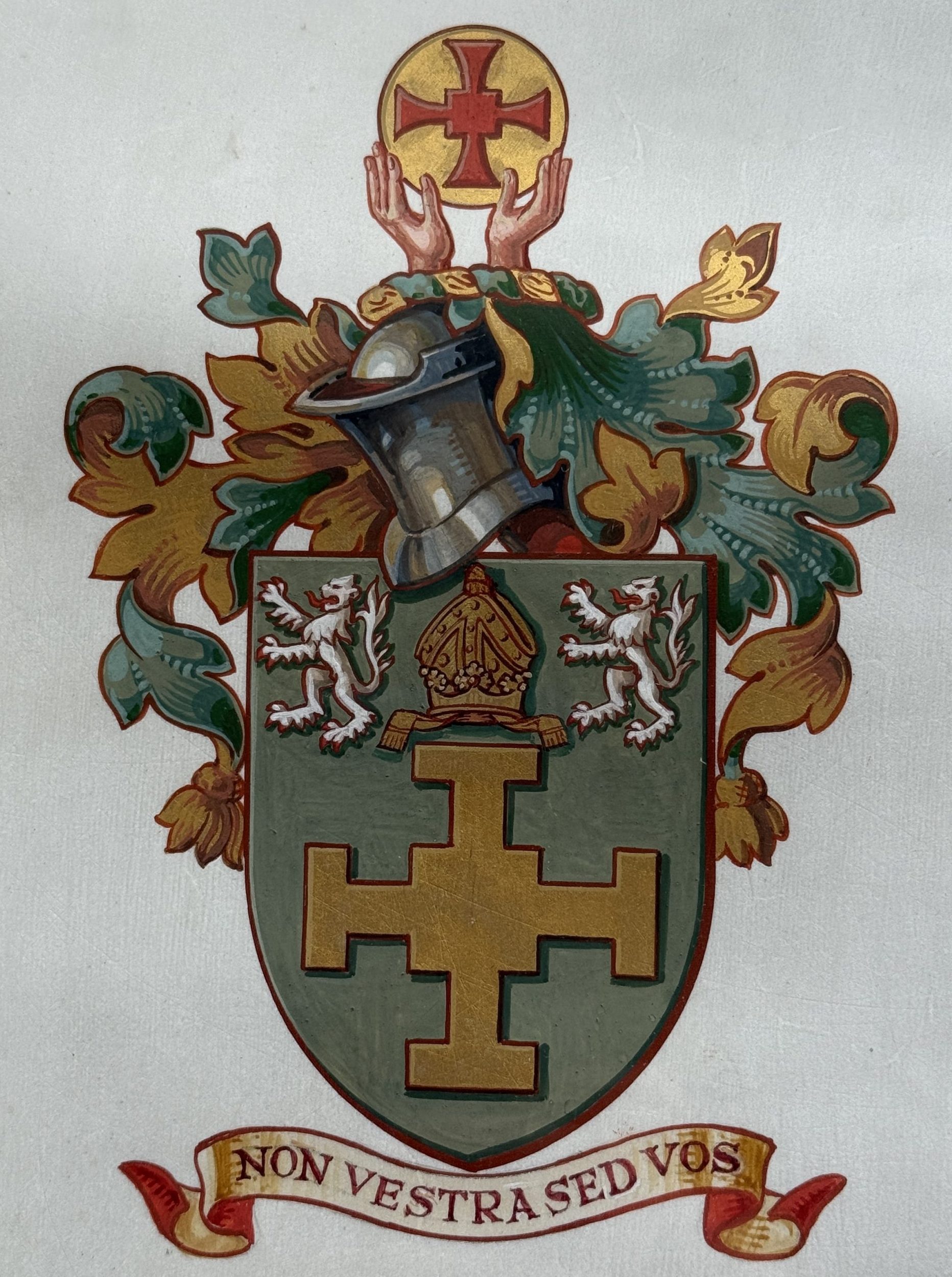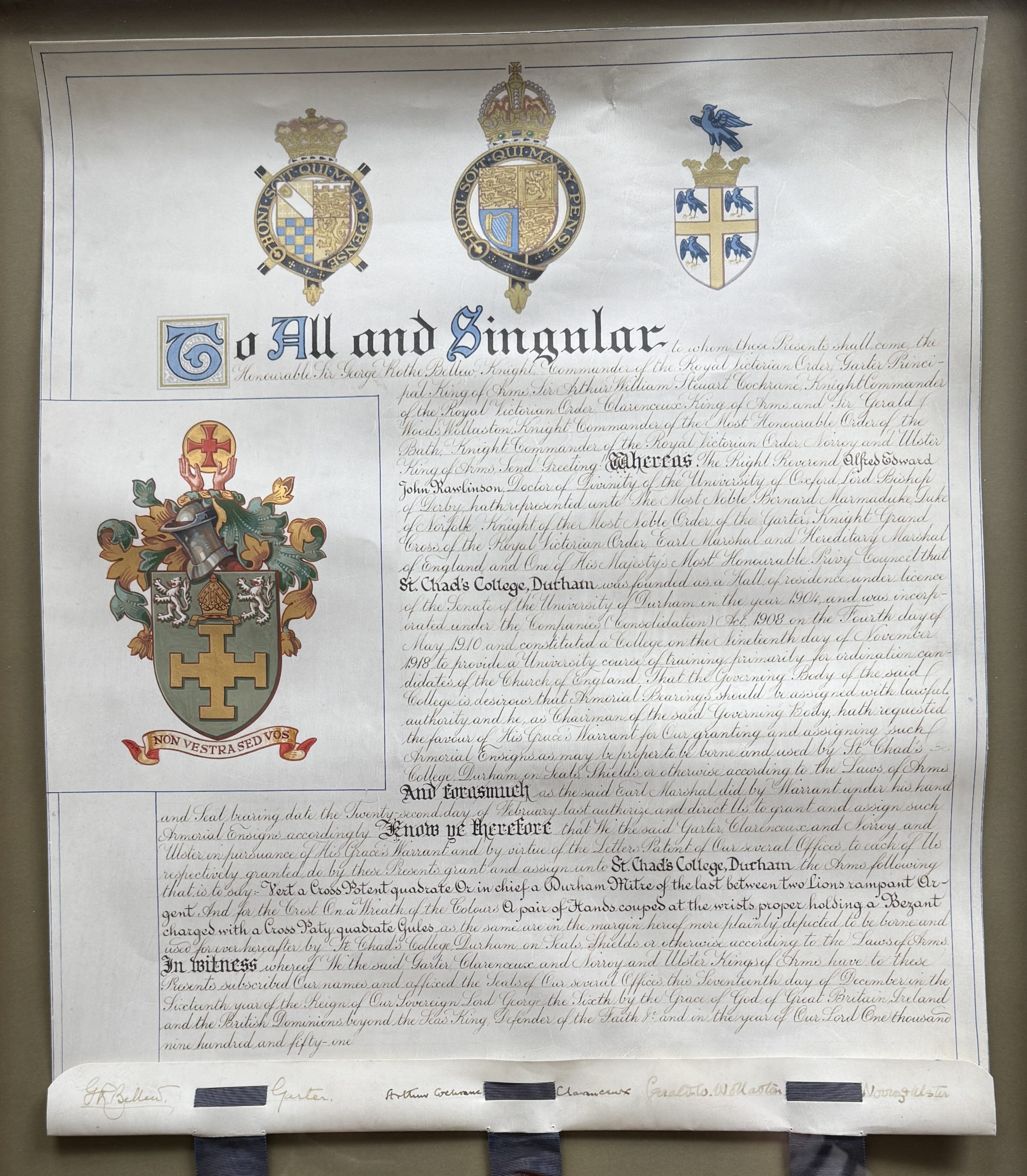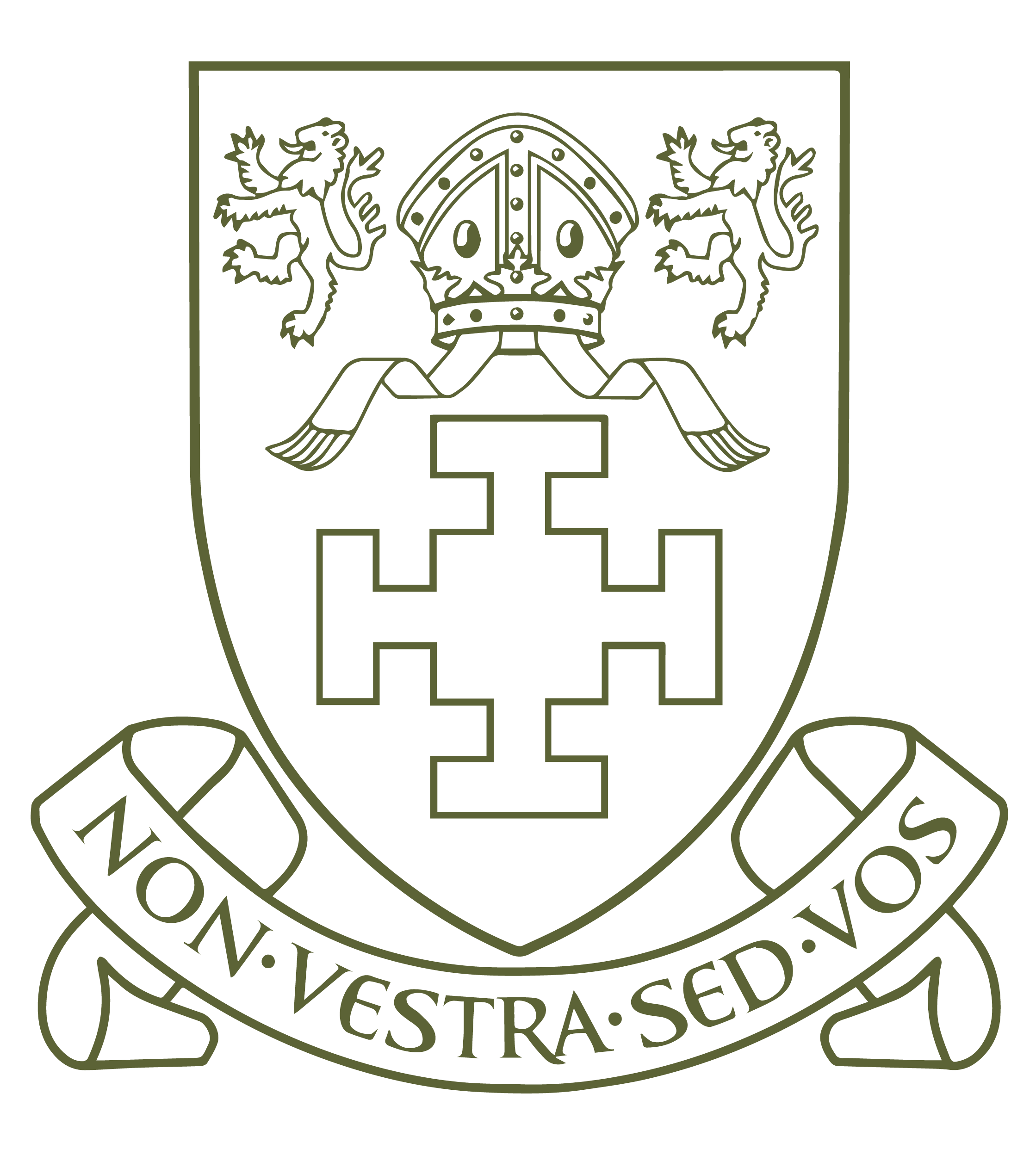Our College Motto: Non Vestra Sed Vos
 The motto of St Chad’s College is “Non vestra sed vos” – “Not what you have, but you yourselves”.
The motto of St Chad’s College is “Non vestra sed vos” – “Not what you have, but you yourselves”.
It comes from a phrase from St Paul’s second letter to the Corinthians, chapter 12, verse 14. Paul (like St Chad) was a roving teacher of Christ’s gospel, and a spiritual guide to the churches he founded. Evidently some at Corinth were worried about the potential demands of his third visit upon their community. He replies, “I will not be a burden, because I do not want what is yours, but you … Everything we do, dear friends, is for your edification.”
“Not what you have, but who you are”, is the ethic that inspired St Chad too. It encapsulates the College’s purpose and values:
- To see beyond what a person has to who they are, who they can become, what purpose they can aspire to serve in life
- To respect the dignity of each human person
- To build people up in mind and heart in our shared intellectual community
- Not to demand, but to give oneself in the service and edification of all
- To ensure that, with our scholarships and outreach programmes, coming to Durham through St Chad’s should never be a hardship or burden, but always a gateway to all the possibilities of the future.
Our Coat of Arms
Vert a Cross potent quadrate Or in chief a Durham Mitre of the last between two Lions rampant Argent
Our present armorial bearings were granted by the College of Arms in 1951. The coat of arms is a shield of green, bearing a gold St Chad’s Cross surmounted by a Mitre between two silver lions.

The shape of the Cross is taken from the arms of the Diocese of Lichfield, of which Saint Chad was bishop from 669 to 672. When this form of Christ’s Cross was first adopted for the emblem of St Chad’s Hostel at Hooton Pagnell, it was not in green and gold, but in red and silver. This was because of an initial link with Lichfield Theological College, which provided academic oversight before St Chad’s Hall at Durham was opened. In a happy coincidence, a Principal of Lichfield, John Fenton, became Principal of St Chad’s in 1974.
We do not know why green was chosen for the shield of the College which succeeded it, or the particular olive hue that continues to characterise St Chad’s.
The mitre refers to the service of St Chad as bishop first of the Northumbrians and then of the Mercians. The Durham Mitre, encircled at its base with a coronet, shows the Palatinate power of civil government that once belonged to the Bishop of Durham. From this derived the foundation of the University, to which St Chad’s belongs, by Bishop van Mildert and Durham cathedral.
The two silver lions on either side of the mitre also refer to the bishopric of Durham, which succeeded as the centre of the diocese that covered Northumbria north of the Tees after St Cuthbert’s body came to rest here after its long journey from Lindisfarne. The lions feature on the Bishop’s coat of arms and derive from that of the 14th century bishop Thomas Hatfield. The first principal of St Chad’s Hall (now St Chad’s College) was Dr Stephen Moulsdale, a graduate of our neighbour, Hatfield College.
Over the coat of arms are embellishments deemed suitable for St Chad’s College. Upon the shield is a closed steel helmet, indicating the legal personality of the College. Upon the helm is the torse, a wreath woven in two of the College’s heraldic colours, green and gold, from which falls the cloth mantling of the helm and coat of arms in the same colours.
Rising from the torse is the College crest, showing a priest’s hands offering up a Host, the bread consecrated as the Body of Christ, a central action in the rite of Mass. The host (hostia is Latin for an innocent life taken in sacrifice) is shown in gold or cream to signify glory, and bears a St Cuthbert’s Cross in red, noting both the College’s close association with Durham diocese, and also the Blood of Christ shed for the love and salvation of the world.

In attire worn by members of St Chad’s – such as robes, ties, scarves, pins and cufflinks – in place of gold or cream, the College’s other heraldic colour (the silver of the lions on the shield) is sometimes used in contrast with St Chad’s green.
A simplified version of the Coat of Arms, using just the shield, is now used by the College in the majority of its day-to-day and official communications. This version of the College crest is shown here. For consistency, ‘Chad’s green’ has been determined from archival material, with the HEX #5b6236 now being taken as the official colour of the College.
